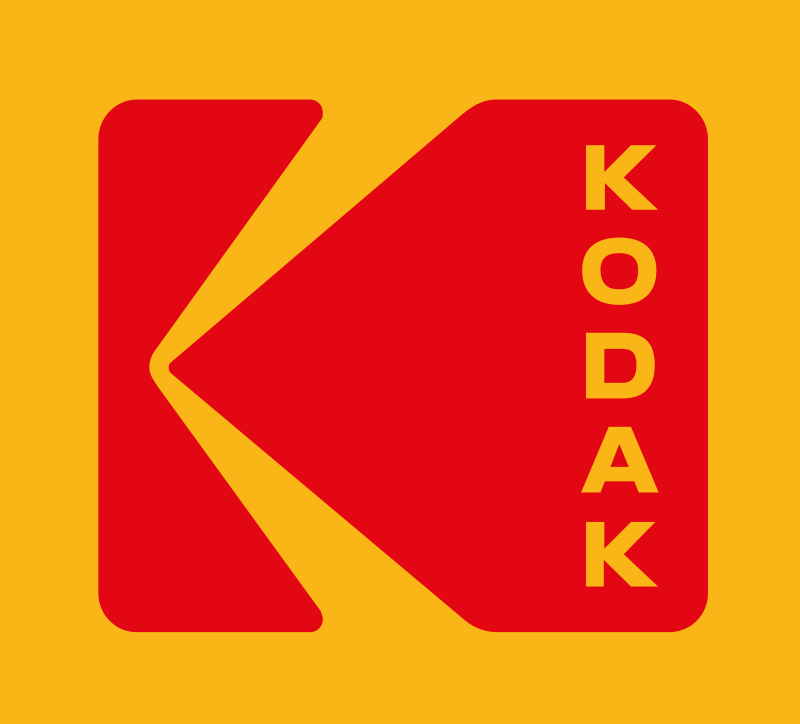We have a good case study this week from Kodak, a famous American Company that is well known for its photographic films. Kodak was founded by George Eastman and Henry A. Strong on September 4, 1888. During most of the 20th century, Kodak held a dominant position in photographic film. The company’s ubiquity was such that its “Kodak moment” tagline entered the common lexicon to describe a personal event that was demanded to be recorded for posterity. Kodak began to struggle financially in the late 1990s, as a result of the decline in sales of photographic film and its slowness in transitioning to digital technology.
So why have we chosen Kodak? We have chosen it because it provides a classic case of a company that failed to adjust to the fast changing world of digital technology. They had the some of best engineers and other professionals at the time but still failed! Kodak got caught looking backward when it should have been looking forward and taking risks to reinvent the company.
The company had very talented executives along with the best engineers and chemists. But all its smart people focused on Walmart gaining market share with its single-use film camera when wireless operators were enabling consumers to send digital photos over mobile devices, which reinvented what consumers could do and wanted to do with photography. As a result, while Apple was reinventing the mobile phone with multimedia capabilities that matched what was going on in the big picture, the world’s best brand in photography spent billions expanding its investment in an old technology.
We thought that you could also benefit by studying the analysis below. Try and apply this to your company or business, are you in the same boat? Are you adjusting quickly to the changes in the external environment?
By Nitin Pangarkar
“You press the button, we do the rest.”
So went the advertising slogan coined by Kodak in the late 19th century.
It was a motto that opened the door to mass-market consumer photography – a popular culture pioneered by Kodak, but which its recent sorry decline has shown it failed to keep pace with.
The habit of button-pressing is of course more popular then ever – see Facebook, Tumblr, Flickr et al. But for Kodak, recently forced to file for bankruptcy protection, the company’s failure to reinvent itself to the instant gratification realities of the digital era meant there was increasingly little of “the rest” for it to do.
Founded by inventor and philanthropist George Eastman, Kodak’s little yellow film packages became one of the world’s most recognised brands. Indeed for much of the twentieth century Kodak was an American industrial icon – at one point enjoying a similar status as tech giant Apple does today.
Since the turn of the century however, the fortunes of the once mighty photographic firm have plummeted. By early 2012 Kodak’s shares were trading at around 40 cents, down from $40-45 just seven years earlier. The NYSE even went as far as to warn the company that it risked being delisted.
So where did it go wrong?
One common explanation about Kodak’s demise is that it missed the digital revolution – or simply that the ubiquity of digital cameras made photographic film redundant while Kodak bosses buried their heads in the sand. While that explanation has some merits, it is far from the full picture. In fact Kodak was a pioneer in the development of digital cameras, producing the first prototype megapixel digital camera in 1975.
Presented to sceptical Kodak executives, the bulky device was powered by no less than 16 batteries and took a full 23 seconds to record a single image, using a cassette tape as the equivalent of today’s memory card. (You can see a picture of the camera on this Kodak blog, the title of which is a story in itself: “We had no idea”)
Even when digital cameras reached the consumer market in the mid- to late-1990s, some of Kodak’s early models vied with models from Olympus and Sony for top-selling spots. In fact, the early cameras made by Canon, the current global leader in digital cameras, lagged well behind those of Kodak in terms of consumer acceptance as well as critical reviews.
Kodak didn’t lack technical expertise either and, even today, has considerable intellectual property in the digital imaging space with its thousands of patents worth several billion dollars. Why then is Kodak struggling to survive despite a strong start in the promising – and still rapidly growing – arena of digital imaging?
Bridging the gap
In my recent book High Performance Companies: Successful Strategies from the World’s Top Achievers I suggest that successful innovators must be able to integrate (as in combine) external and internal knowledge. An excellent example of this is the case of Fanuc, the Japanese maker of machine tool controls.
Based near the foot of Japan’s iconic Mount Fuji, Fanuc used to make mechanical and hydraulic controls in the 1970s. But after the first oil shock in 1973, operating costs of those controls became prohibitive because they consumed a lot of oil.
In response, Fanuc began a huge effort to shift to computer controls. It overcame gaps in its own knowledge by partnering with diverse sources including the University of Tokyo, its customers, end-users and sometimes even existing as well as potential competitors, such as GE and Siemens which had their own aspirations in this industry.
The external knowledge from these partnerships was combined with a number of other elements including its own internal knowledge, some bold strategic bets (being the first to use an Intel microprocessor in a dusty, dirty and hot factory environment) and a far-sighted leadership which had the vision of global leadership.
Not only did Fanuc manage to successfully adopt new electronic technology, it also became a dominant leader. Indeed a recent Bloomberg article recently called it “The Microsoft of machine tools” – a company whose products effectively run the world’s factories.
Kodak’s failure to adapt to the new technology stands in stark contrast to Fanuc’s case because Kodak had greater resources in terms of its brand reputation, its finances and its technological prowess in digital imaging. Kodak’s failure lay in its strongly inward focus.
Although it was a pioneer in the technical aspects of digital imaging, it lacked skills in areas such as lens making and manufacturing (making efficient and reliable electronic devices) to successfully commercialise products based on its innovations in digital imaging.
Critical integration
While Kodak did make efforts to outsource its camera manufacturing (and thus fill some gaps in expertise), the outsourcing arrangement did not achieve the integration of external knowledge with Kodak’s own internal knowledge that was so critical to continued innovation. As a result, Kodak remained stuck in the lower end of the digital camera spectrum and could never compete in the high end of the spectrum, which is where the bulk of the profits are.
That all begs the question: Why did Kodak fail to achieve the integration of external and internal knowledge? After all, Kodak was for decades a greatly admired company which owned an iconic brand. It had mastered all aspects of the film business including R&D, manufacturing, marketing and worldwide distribution.
The answer lies in the quality of management. Unlike Fanuc which had the towering figure of Dr Inaba, a key scientist in his field of robotics and numerical controls; in its effort to provide the visions needed to adapt to the new technologies and then lead the world market, Kodak went through a number of CEOs – it is on its fourth CEO since 1990.
The short tenure of each CEO made working towards a distant goal of industry leadership in the fast evolving technology of digital imaging rather difficult.
Very often, when CEOs change, they bring new priorities and the pursuit of a distant goal can be easily ‘misplaced’ in these reshuffles, or, worse yet, the goals themselves may be changed. Kodak also went through numerous restructurings which were traumatic for the employees and sometimes also taking it into unfamiliar and hypercompetitive markets such as printers, again diluting its focus.
The key stumbling block was its inability to convert its technical expertise into tangible products that could be sold profitably
Complacency also played its part. Kodak is based in Rochester, New York, where it was the largest employer and has a towering influence. It has helped many local causes – in fact of one of the premier music schools in the world (the Eastman School of Music at the University of Rochester) bears the name of Kodak’s founder.
Possibly, in its efforts to continue to be good to the local community, Kodak let its costs get out of control. Like many corporate peers such as GM, legacy costs (funding generous retirement packages) became a huge burden, especially when revenues started to decline.
So what lessons do Kodak’s problems hold for others?
From my perspective, the key stumbling block was its inability to convert its technical expertise into tangible products that could be sold profitably (in other words a sustainable business model). Kodak had several gaps in its expertise to design a complete business model but lacked the clarity of vision or the continuity of leadership to acquire the resources in a systematic fashion, let alone integrate them with its considerable internal knowledge of digital imaging.
Other companies facing similar technological discontinuities would do well to remember the critical role of integration of internal and external knowledge to achieve innovation, which would, in turn, improve their chances of successful adaptation.
![]()





